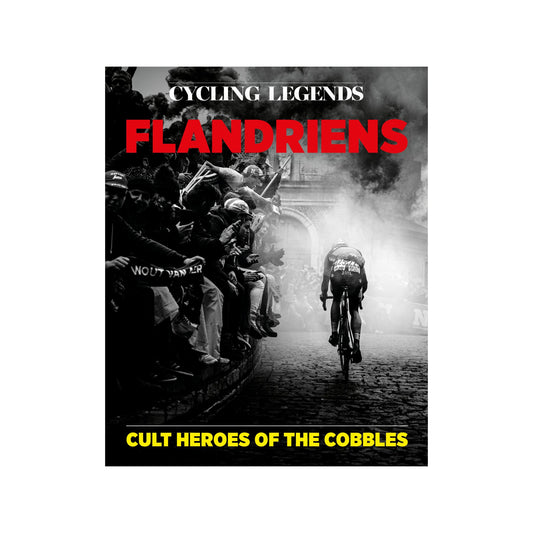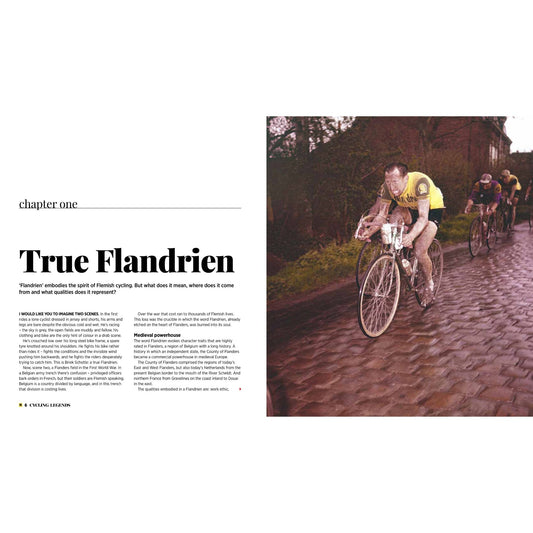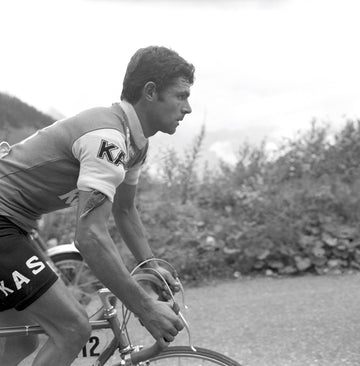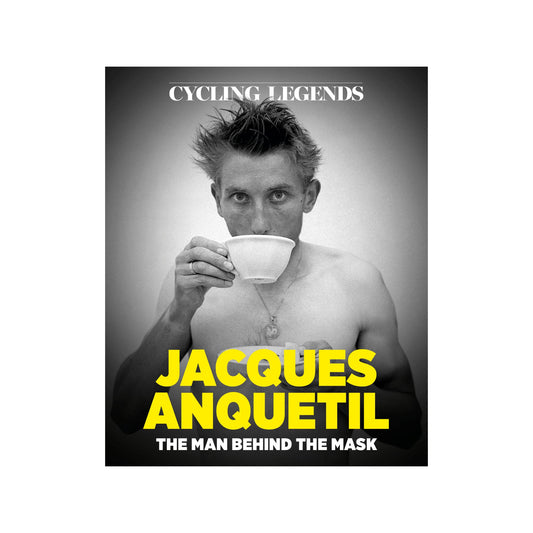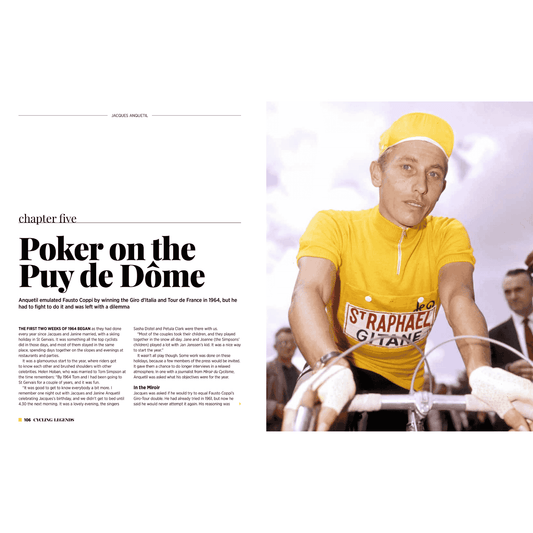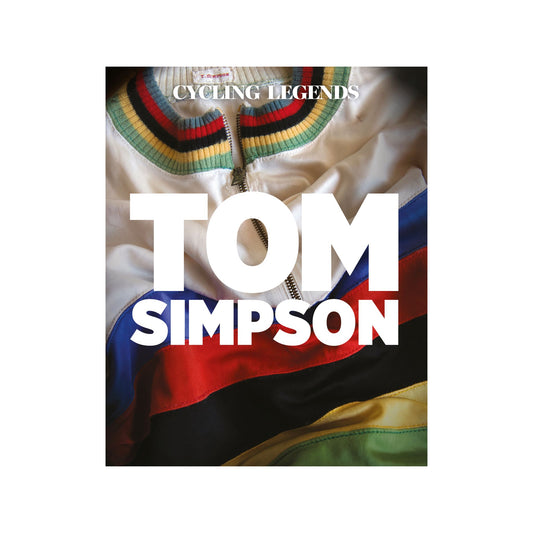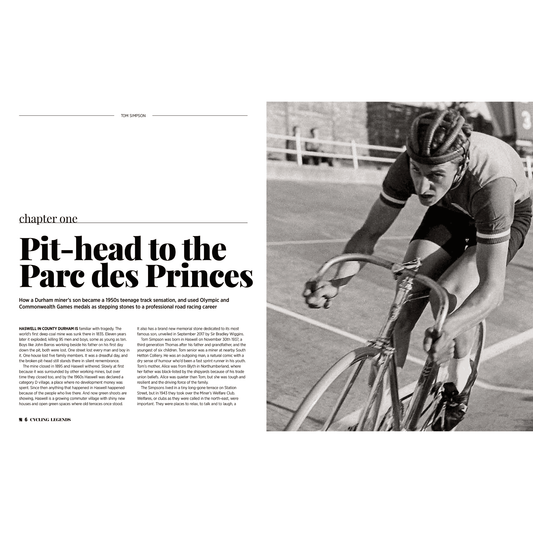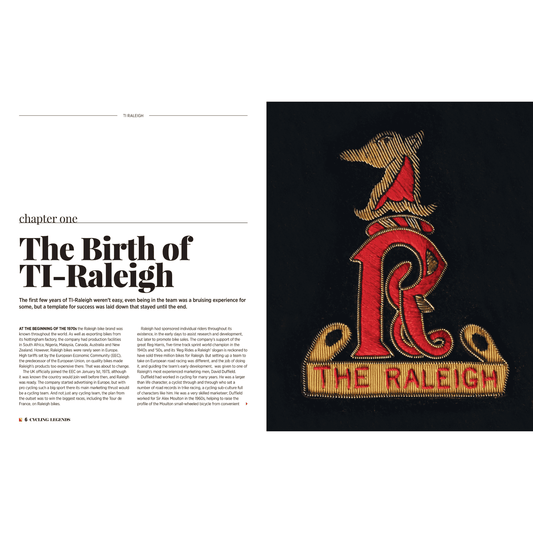Pure climbers are one of the most glorious sights of cycling. They fly where others force, they are untethered, untameable - wild.
One of the wildest was a tiny Spaniard with enormous courage called José-Manuel Fuente. He came from Asturias, a wild place with a hard past of heavy industry in its craggy mountains. The wildest climb in cycling, the Alto de l‘Angliru is in Asturias.
It is tough country and they breed them tough. José-Manual was tough, and he was a fighter. Locals called him El Tarangu, an Asturian dialect word meaning man of strength and character. His father and grandfather went by the same nickname.
Fuente was the perfect climber, short, compact and without a gram of excess weight. He possessed a climber’s restless spirit, a constant impatience for the road to tip upwards so he could attack.
Like so many climbers he lived to attack, and Fuente’s attacks were so dangerous, they even changed the way the greatest male cyclist ever raced. “Fuente attacked me early on every mountain stage of the 1972 Giro d’Italia,” says Eddy Merckx.
“Normally I would have tried to control a climber like that, chase him down, so as not to give him any space or confidence. But with Fuente I couldn’t react and catch him. I had to set a tempo I knew I could keep to, and hope that he would eventually fail, and I’d catch him.”
José-Manuel was such a threat to Merckx, because as well as causing devastation going uphill he descended expertly too. He was a real mountain man, a very skilful and confident downhill racer, unlike some climbers who’d gone before.
Team KAS
Fuente turned professional in 1969 for the Pepsi Cola team. He then did one year with the Karpy team and transferred to KAS. What an amazing team that was. It was made up almost entirely of climbers, and they would swarm like midges, dive-bombing the opposition with repeated attacks.
In 1971 Fuente became the team’s star rider. He won stage ten of the Giro d’Italia, and took his first of four King of the Mountains titles. After that he went home to Asturias to prepare for the Tour de France.
It didn’t start well. Fuente did badly on stage 12, where his countryman Luis Ocaña decimated the field on the way to the ski resort of Orcières-Merlette. Next day Eddy Merckx was on the rampage trying to regain time lost on Ocaña, and his pressure again ripped the race to pieces. Fuente was outside the time limit on both stages, but so were many other riders. They were all spared in an organiser’s amnesty.

Whatever was holding Fuente back had gone by the Pyrenees. On stage 14, Revel to Luchon, when Luis Ocaña crashed out of the race in the yellow jersey, Fuente attacked early. He was well down on the overall standings, so was no threat to any favourites, but he still won by 6 minutes and 19 seconds from Merckx.
Next was the shortest ever road race stage in the Tour to that point, covering just 19.6 kilometres from Luchon to Superbagnères, all of it uphill. The climb starts quite easily, but six kilometres in the gradient steepens. That’s where Fuente attacked. It was a rout, he danced up the mountain, out of the saddle most of the way, relentlessly upwards through pouring rain.
Merckx lost a minute to the Spanish climber, which proved how dangerous this emerging rival was. Poor Eddy Peelman of Belgium ended up nearly ten minutes behind Fuente, and was six seconds outside the time limit. However, his team manager protested on the grounds that Fuente had already been let off twice for being outside, so Peelman stayed in.

Fighting hard
Fuente grew stronger the following year, winning the Vuelta a España and its mountains title, plus one stage. That gave him confidence to really go after Merckx in the 1972 Giro d’Italia. KAS was 100 percent behind him.
“All that team were good climbers, but Fuente was the best,” Merckx remembers. “Not that you could allow any of them to gain time in the mountains. I think KAS had three riders in the top five of the Giro that year. They fought me hard in lots of races, but they gave me a difficult time in 1972. Especially on the first climbing day to the top of the Blockhaus.”
It was another short one, 48 kilometres from Francavilla al Mare to the top of Blockhaus, most of it uphill. Blockhaus starts in Pretoro, and as the road steepened the yellow and blue KAS jerseys started attacking. It took them two kilometres to rip the race to ribbons.
Taking chances
Santiago Lazcano was the first KAS rider to go and Merckx, realising that if he reacted too quickly KAS would take it in turns to attack him, did the only thing he could. “I went very hard, but I went at a pace I knew I could keep until the top. I decided the thing to do was ride my race and just take my chance with what the Spaniards might gain,” he says.
Merckx hammered out a brutal but steady rhythm, enough to have the other KAS riders in a line behind him, and enough to bring back Lazcano. Merckx had slowly drawn the sting from the Spanish wasps, except one - José-Manuel Fuente.
He attacked and put 2 minutes 36 seconds into Merckx, taking the pink jersey to lead the Giro. Then he maybe should have defended for a couple of days, but Fuente didn’t. He was El Tarangu, all he knew was to attack.
Merckx kept riding at his own steady but very hard pace, and eventually Funete’s attacks and Merckx’s resilience wore him out. He lost the lead and had to settle for second place overall. But he’d fought the Belgian master, and would carry on doing so.
Spain dominates
Fuente played a big part in Luis Ocaña’s domination of the 1973 Tour de France. Merckx wasn’t riding, and Fuente was the only rider comparable to Ocaña in the mountains, but the diminutive Asturian couldn’t time trial like Ocaña, so he ended up 3rd overall in Paris. It was his highest ever Tour de France placing.

In a way though Fuente helped make Ocaña look even better than he was. His attacks dragged Ocaña clear when Ocaña won the first big mountains stage in the Alps at Aspro-Gaillard. He did the same when the two put in a virtuoso performance on the Moutiers to Les Orres stage, which crossed the Galibier, the spectacular Col d’Izoard and other big climbs.
Ocaña was first and Fuente second on that stage, but they rode so hard and attacked so often that the next rider finished seven minutes behind them. In the end though, just as they had with Merckx, Fuente’s attacks that day cost him and he couldn’t hold Ocaña on the final climb.
The same happened in the Pyrenees. Fuente’s attacks helped Ocaña get clear, especially on stage 13, Bourg-Madame to Luchon, when Fuente was at least able to collect enough mountain points to secure second place to Pedro Torres in the King of the Mountains competition.

Attacking ran like a watermark though El Tarangu’s career. Looking back now maybe if he had timed his attacks better, saved them for later in a stage, then launched one big leg-breaker on the last climb he might have won more. But that was not how he was made, or how he thought.
Fuente’s last big victory was the 1974 Vuelta a España, when he also won two stages. After that a problem with his kidneys began to affect his health. He stopped racing to run a bike shop in 1975, and died in 1996 aged 50, suffering from advancing kidney disease.
